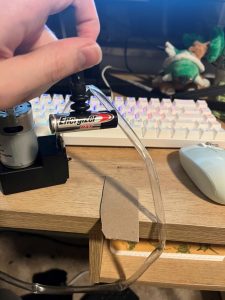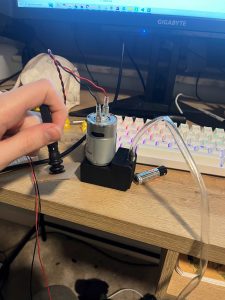This week was spent doing work for the conveyor belt, updated gantry frame, and the end-effector. I was able to construct a rough conveyor belt when the materials arrived, such that the cloth has enough tension where it rolls when the bars it is wrapped around rotate. I spent some time working out how the new gantry frame will be build using the new aluminum extrusions, with the plan being to cut the rods sometime next week for assembly. I was also able to finish the design of the end-effector by attaching a solenoid to the end-effector such that a hole is plugged and unplugged to release the objects grabbed by the suction end-effector. I plan to attach it to the gantry tomorrow so that it is ready in time for demo.
Next week I hope to rebuild the frame and attach a stepper motor to the conveyor belt so that it is able to turn when commanded by the Arduino. I also hope to start the movement estimation code so that the gantry can move to the object’s location given that it is moving at a constant speed after detection. I am on schedule.


